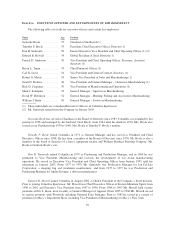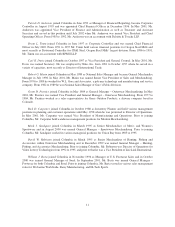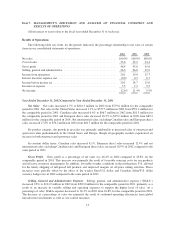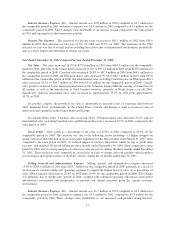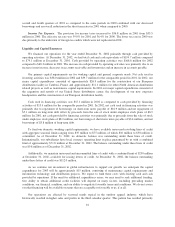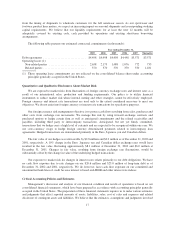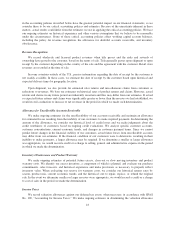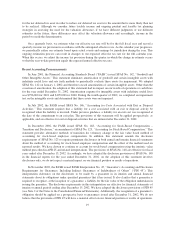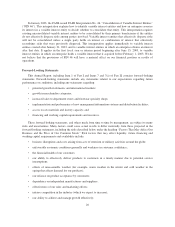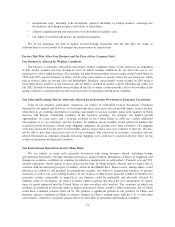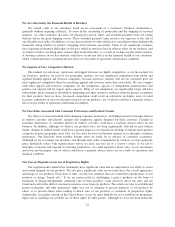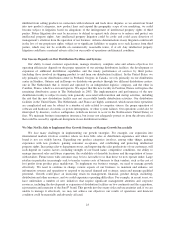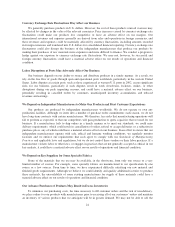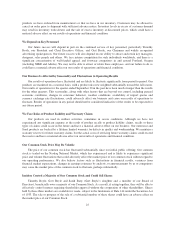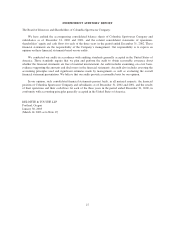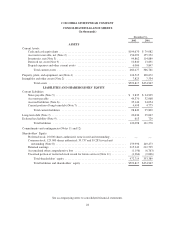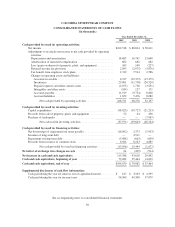Columbia Sportswear 2002 Annual Report Download - page 27
Download and view the complete annual report
Please find page 27 of the 2002 Columbia Sportswear annual report below. You can navigate through the pages in the report by either clicking on the pages listed below, or by using the keyword search tool below to find specific information within the annual report.In January 2003, the FASB issued FASB Interpretation No. 46, “Consolidation of Variable Interest Entities”
(“FIN 46”). This interpretation explains how to identify variable interest entities and how an enterprise assesses
its interest in a variable interest entity to decide whether to consolidate that entity. This interpretation requires
existing unconsolidated variable interest entities to be consolidated by their primary beneficiaries if the entities
do not effectively disperse risks among parties involved. Variable interest entities that effectively disperse risks
will not be consolidated unless a single party holds an interest or combination of interest that effectively
recombines risks that were previously dispersed. This interpretation applies immediately to variable interest
entities created after January 31, 2003, and to variable interest entities in which an enterprise obtains an interest
after that date. It applies in the first fiscal year or interim period beginning after June 15, 2003, to variable
interest entities in which an enterprise holds a variable interest that it acquired before February 1, 2003. We do
not believe that the provisions of FIN 46 will have a material effect on our financial position or results of
operations.
Forward-Looking Statements
This Annual Report, including Item 1 of Part I and Items 7 and 7(a) of Part II, contains forward-looking
statements. Forward-looking statements include any statements related to our expectations regarding future
performance or conditions, including any statements regarding:
• potential growth in domestic and international markets;
• growth in merchandise categories;
• increased sales to department stores and footwear specialty shops;
• implementation and performance of new management information systems and distribution facilities;
• access to raw materials and factory capacity; and
• financing and working capital requirements and resources.
These forward-looking statements, and others made from time to time by management, are subject to many
risks and uncertainties. Many factors could cause actual results to differ materially from those projected in the
forward-looking statements, including the risks described below under the heading “Factors That May Affect Our
Business and the Price of Our Common Stock.” Risk factors that may affect liquidity, future financing and
working capital requirements and availability include:
• business disruptions and costs arising from acts of terrorism or military activities around the globe;
• unfavorable economic conditions generally and weakness in consumer confidence;
• the financial health of our customers;
• our ability to effectively deliver products to customers in a timely manner due to potential service
interruptions;
• effects of unseasonable weather (for example, warm weather in the winter and cold weather in the
spring that affects demand for our products);
• our reliance on product acceptance by consumers;
• dependence on independent manufacturers and suppliers;
• effectiveness of our sales and marketing efforts;
• intense competition in the industry (which we expect to increase);
• our ability to achieve and manage growth effectively;
20


